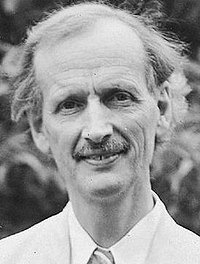Jean Piccard
| Jean Piccard | |
|---|---|

Jean Piccard visiting Brigham Young University in 1938
|
|
| Born |
January 28, 1884 Basel, Switzerland |
| Died | January 28, 1963 (aged 79) Minneapolis, United States |
| Nationality | Swiss from 1931 American |
| Fields | Inorganic chemistry |
| Institutions |
University of Munich, University of Lausanne, University of Chicago, University of Minnesota |
| Alma mater | ETH Zürich phd 1909 |
Jean Felix Piccard (January 28, 1884, in Basel, Switzerland – January 28, 1963, in Minneapolis, Minnesota), also known as Jean Piccard, was a Swiss-born American chemist, engineer, professor and high-altitude balloonist. He invented clustered high-altitude balloons, and with his wife Jeannette, the plastic balloon. Piccard's inventions and co-inventions are used in balloon flight, aircraft and spacecraft.
Piccard and Jeannette Ridlon met at the University of Chicago where he taught and she received her master's degree. They married and had three sons, John, Paul and Donald, and also had foster children.
Piccard was the co-pilot for his wife Jeannette on the third and final voyage of the Century of Progress. The largest balloon in the world was conceived for him to fly at the World's Fair in 1933 but was flown there by US Navy pilots who were licensed. After this flight he created the liquid oxygen converter when the liquid failed to vaporize on descent after the cabin doors were open. Piccard developed a frost-free window, that was used on this flight and later by the Navy and Air Force in the B-24 Liberator or B-26 Marauder. He used blasting caps and TNT for releasing the balloon at launch and for remote release of external ballast from inside the sealed cabin. This was the first use of pyrotechnics for remote-controlled actuating devices in aircraft, an unpopular, revolutionary idea at the time. Later his student Robert R. Gilruth, who became the director of the NASA Manned Spacecraft Center, approved and used them in spacecraft.
...
Wikipedia
